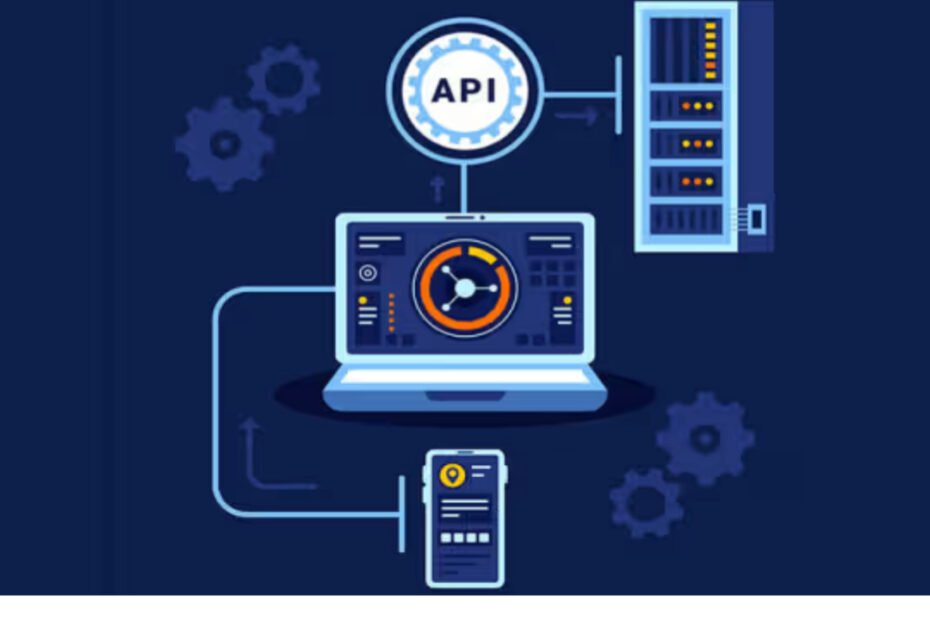PaaS (Platform as a Service) has been gaining traction in the market by offering developers all the resources they need to ensure greater agility, flexibility, and efficiency in application development.
In this article, we’ll show you how PaaS works in practice, explain why it’s trending, highlight its benefits, and recommend courses that can help you master this technology and excel in the IT field.
What is PaaS?
Platform as a Service (PaaS) is a cloud computing model that offers a complete environment for developing, running, and managing applications. In this model, the provider manages all infrastructure, such as servers, networks, operating systems, and databases.
This allows companies and developers to accelerate projects, reduce costs, and expand the capabilities of their solutions without having to directly manage the physical infrastructure, whether for maintenance or configuration.
How does PaaS work?
As previously highlighted, PaaS brings together hardware and software resources in a ready-made environment, where developers can create, test, and manage applications quickly and securely. The main components include:
Cloud Infrastructure: This includes servers, storage, and networks;
Development Tools: Libraries, frameworks, and programming kits;
Access Interfaces: graphical user interface, command-line interface, or API interface.
Because it’s a cloud service, PaaS allows applications to be developed, tested, and deployed directly on the platform. Furthermore, professionals and teams can work from anywhere in real time, facilitating collaboration and project management.
Advantages of PaaS
This solution offers several benefits, including:
- Development Agility: With PaaS, developers have instant access to the necessary resources and tools, which significantly speeds up the entire development and delivery process;
- Cost Reduction: With Platform as a Service, your company only pays for the resources it uses, eliminating waste and reducing costs related to infrastructure configuration and maintenance;
- DevOps Support: This solution facilitates integration between your development and operations teams, enabling more efficient continuous software delivery;
- Managed Security: PaaS providers offer monitoring and maintenance of security practices, in addition to having qualified teams, ensuring constant protection for their customers.
- Scalability: Finally, applications can be easily adjusted according to demand, and cloud migration is simplified.
What to consider when choosing a PaaS provider?
Choosing the right PaaS provider is essential to ensuring your applications run efficiently and securely. Here are some points to consider before making a decision:
- Reliability and performance: First and foremost, the platform must offer a stable infrastructure with high availability and good response times.
- Compatibility and tools: Check whether the PaaS supports the languages, frameworks, tools, and libraries your team uses or needs to develop projects.
- Security and compliance: Next, make sure the provider follows good security practices, performs automatic backups, and complies with industry standards.
- Scalability and flexibility: To consider a good PaaS provider, it’s essential that they allow users to easily increase or decrease resources according to the demands of each project.
- Support and documentation: Finally, check whether the provider offers fast technical support and comprehensive documentation, as this ensures your team can easily adopt the platform and resolve issues quickly. These tips will make it easier to choose a PaaS provider that meets the needs of your project and team.
PaaS courses to help you specialize in this technology
If you’re looking to delve deeper into PaaS and gain practical skills for building and managing cloud applications, check out some of the best course options available:
1. Azure IaaS & Azure PaaS Architecture and Solutions
First on our list, we have the Azure IaaS & Azure PaaS Architecture and Solutions course, a great option for those who want to specialize in PaaS and learn how to create, manage, and deploy applications in cloud environments in a practical way.
The content covers everything from IaaS and PaaS concepts to cloud-native application development, including App Services, Database as a Service, Data Processing as a Service, solution architectures, and integration with other Azure services.
Main topics covered:
Creating and managing PaaS applications in Azure
Cloud-native solution architecture
Azure services: App Services, Database as a Service, and Data Processing
Integration with other Azure services and security practices
Hands-on application deployment and management
Course information:
Certification: Yes, Udemy certificate of completion
Duration: 20 hours of on-demand video
Mode: 100% online, with lifetime access
2. Azure IaaS & Azure PaaS Architecture and Solutions
Next, we have the UNINASSAU Cloud Computing Architecture Specialization, a comprehensive course focusing on cloud infrastructure, solution architecture, and market practices, preparing students to act strategically in cloud environment management.
In addition to teaching essential theoretical concepts, the content also covers practical subjects such as DevOps, cloud security, machine learning, cloud solution design, and team management with agile methodologies, all within a 100% online format and recognized by the Ministry of Education (MEC).
Main topics covered:
Fundamentals of SaaS, IaaS, and PaaS
Network architecture and cloud solutions
DevOps, cloud security, and machine learning
Cloud solution design and team management
Agile methodologies and market practices
Course information:
Certification: Yes, recognized by the Ministry of Education (MEC)
Duration: 6 months, 100% digital (distance learning)
Modality: Online, with tutoring and technical support
Have you learned what PaaS is and how this technology works?
We hope this content has helped you better understand what PaaS is, how it works, and why this technology is so relevant for cloud application development.
Now that you know its benefits and main uses, it’s time to put this knowledge into practice and invest in your training.

